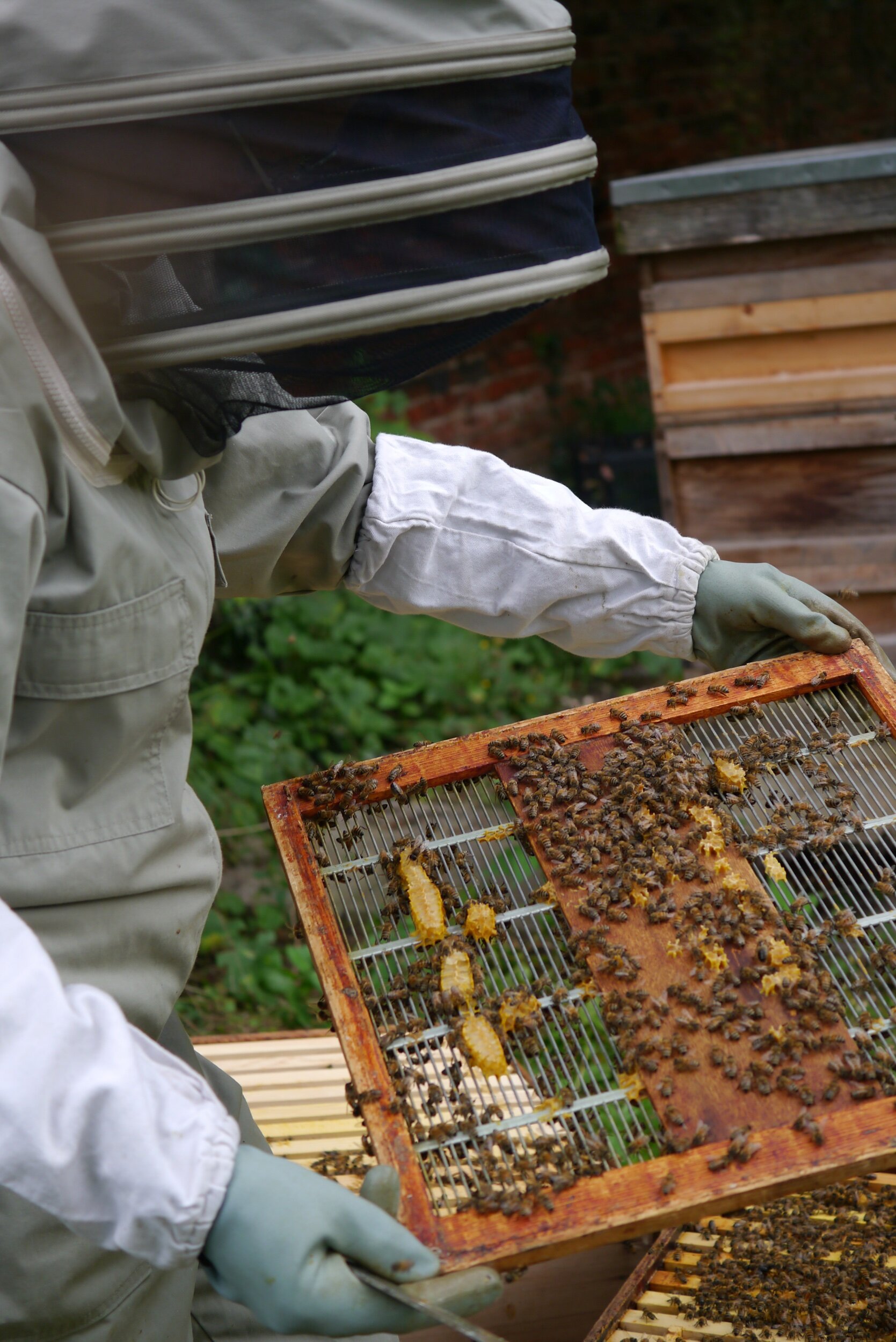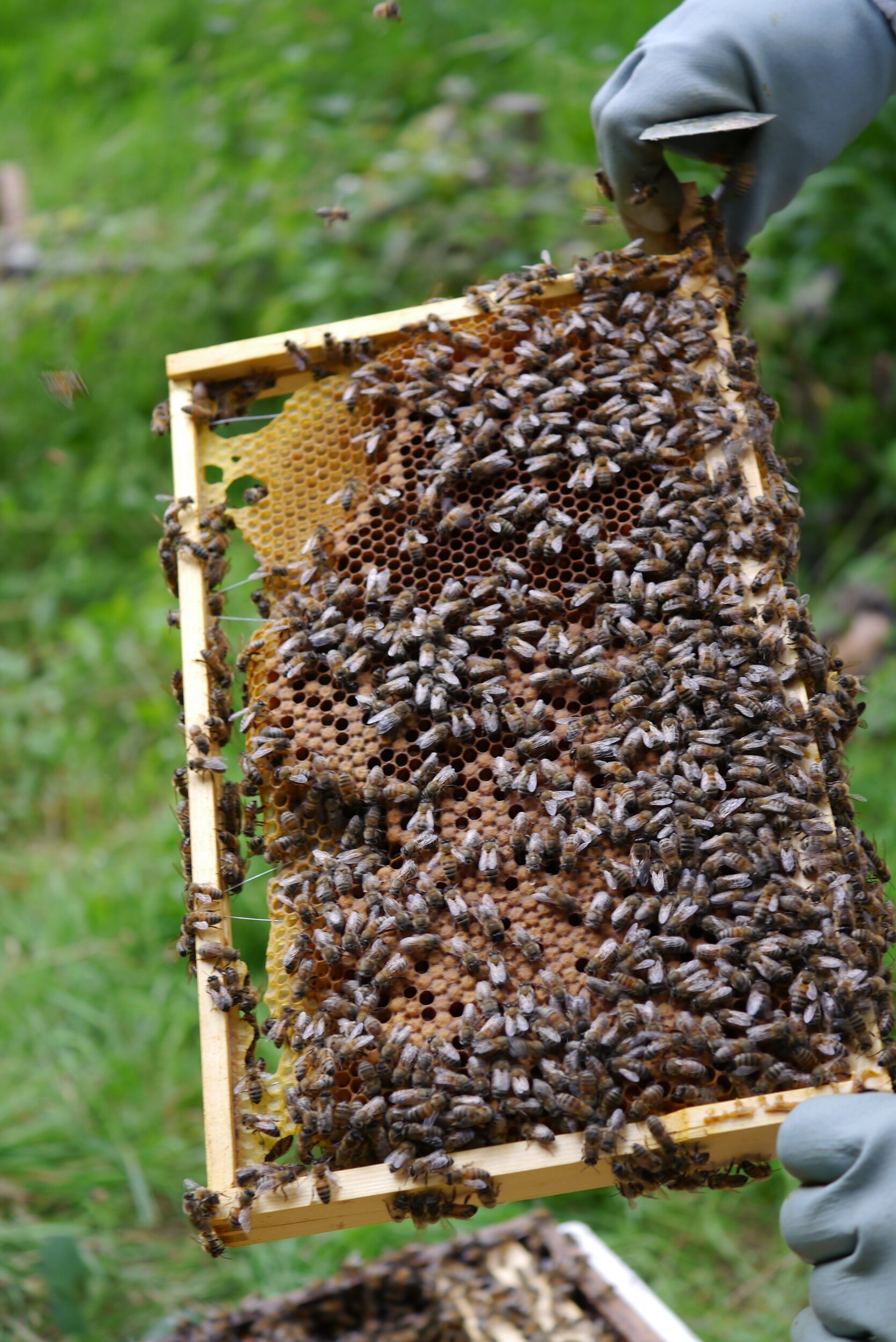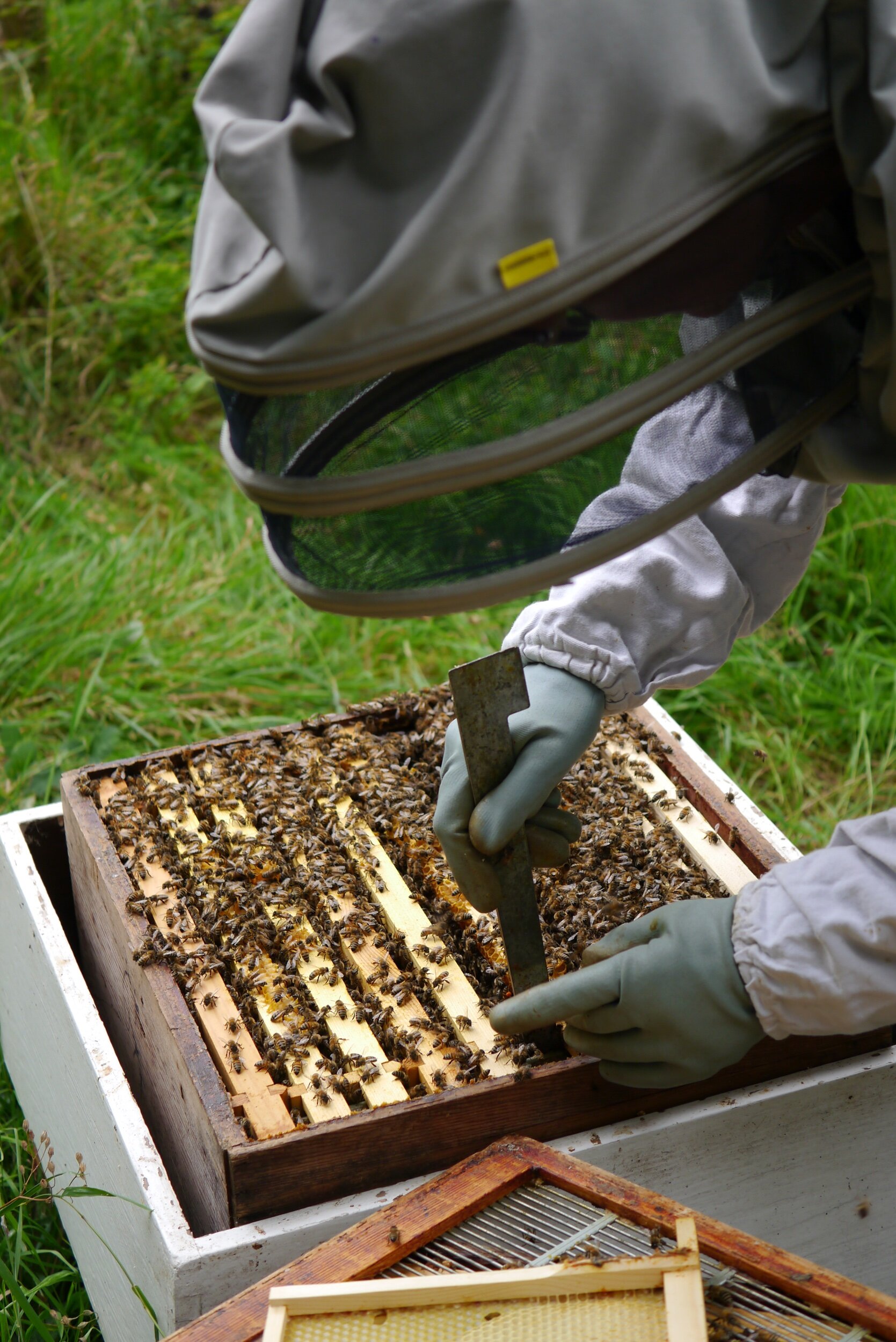This month’s volunteer profile is a little different, as we meet Annie, who looks after Bell House’s bees. If you’re a visitor to the garden on one of Bell House’s Open Garden weekend events, you’ll be able to see the hives at the far end, but for now here’s a little more about what Annie does (and quite a lot about what the bees do!).
Annie first got involved with Bell House through gardening, but for the past three or four years she has been one of two volunteers responsible for the apiary in the garden. She remembers her grandfather keeping bees in Lancashire as a child and, about 12 years ago, ended up taking a course in beekeeping at Camley Street Gardens not far from King’s Cross.
There are hundreds of species of bee in the UK (and thousands throughout the world) but only one that can be called honey bees, which produce and store honey. And although honey is a wonderful product for us (and certainly a benefit of maintaining hives), there are plenty more reasons to keep and encourage bees.
Perhaps most important is the role of bees as pollinators. They’re vital to help maintain biodiversity and ensure the stability of food supplies and other crops. And, because the honey bees visit and gather enough nectar and pollen from flowers to create stores of excess, they can certainly be said to do more than their fair share of the work.
As well as the hives at Bell House, Annie keeps another 6 colonies of bees in 4 other locations. She particularly enjoys the calm and practical side of the work outside; it’s a far cry from her day job, which is usually spent at a computer, and it can be quite a physical hobby. But in some ways, it’s also a very sociable activity – there’s a lively network of London beekeepers, who are always on hand to share observations, advice and to provide friendly support.
During the summer months, Annie will inspect the hives once a week. She looks for queen cells on the frames inside the hive structure. The development of queen cells is a sign that the colony is about to ‘swarm’, possibly having outgrown its existing space, and if this is allowed to happen a beekeeper could be left with a much weaker colony without its queen and a bee colony in a chimney! A single colony can contain as many as 80,000 bees at its height in the summer months, although the number does dwindle to something closer to 10,000 individuals during the winter. If a colony does swarm, the old queen might take 50% of her worker bees with her to create a new colony.
If Annie were to spot a queen cell, which would most likely have been formed at the bottom of a frame, she would do something called ‘swarm control’ and move the existing queen to one side in another hive with plenty of her workers. The queen will start laying eggs in her new home and will effectively be tricked into thinking that she’s actually already swarmed. The result is two colonies, both with queens, and no loss of the precious honey bees to pastures faraway!
This summer hasn’t been a particularly good one for bees. The wet and cold weather really interferes with their pollen and nectar collecting (imagine being the size of a bee and being taken out by a raindrop …). The numbers in Bell House’s hives are lower than they might have been in years with warmer, sunnier weather. But that doesn’t mean that Annie doesn’t still have work to do. As the weather gets colder, one of Annie’s jobs will be to cover the hives with insulation. Inside the hive the temperature is approximately 37 degrees Celsius and maintaining this temperature is important for the continued survival of the colony. If it gets too damp or cold, there’s an increased risk of disease and infection. The bees themselves huddle together, almost like penguins, later on in the year to keep warm and protect the queen at the centre.
Within the colony, Annie explains, bees have very specific roles. There is the queen, who can lay fertilised eggs, the (female) workers and unfertilised eggs for the (male) drones. For the first few days of their lives, worker bees are responsible for cleaning cells within the colony. They progress to looking after and feeding larvae, and after another few days they are responsible for building and repairing cells using wax that they secrete from glands on their bodies, and storing nectar and pollen brought in by other worker bees. Some bees even take on a role as undertaker, removing dead bees and failed larvae to prevent disease and create space. It is an astonishingly regulated existence that matches the very regular geometric structure inside the hive.
Have you ever wondered where the phrase ‘to make a beeline for’ comes from? It derives from the fact that bees have an extraordinarily good sense of direction and know how to get straight back to their hive after collecting pollen and nectar. They are thought to use the sun and a fixture to help them find their way with three special eyes on the top of their heads. And do you know what they do when they return to the hive having found a particularly plentiful source of food? A little ‘waggle dance’ that lets the rest of the hive know where to go.
And if you’re not already bee enthusiasts, you should really know that there’s no need to be afraid of bees. If Annie is beekeeping alone, she sometimes feels comfortable and calm enough to work without gloves.




